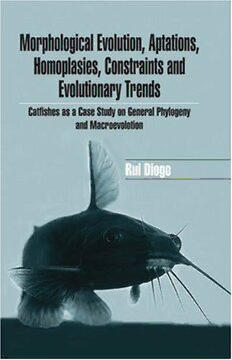
Morphological Evolution, Aptations, Homoplasies, Constraints and Evolutionary Trends PDF
503 Pages·2004·33.632 MB·English
Most books are stored in the elastic cloud where traffic is expensive. For this reason, we have a limit on daily download.
Preview Morphological Evolution, Aptations, Homoplasies, Constraints and Evolutionary Trends
Description:
With more than 2700 species catfishes constitute one of the most diverse groups of Vertebrates. They have a wide geographical distribution, being found in all continents including Antarctica, where fossils were reported. They are not only remarkable in respect of their taxonomic diversity and biogeographic distribution, but also for their amazing anatomical, ethological and ecological diversity. This amazing diversity and complexity precisely provided the rationale to undertake this work: 1) it renders very difficult the study of these fishes as a whole, in particular in what concerns their higher-level phylogeny and evolution; 2) at the same time, it renders this group a very interesting case study for general phylogenetic and macroevolutionary discussions. Therefore, after providing a short introduction to the group and to the methodology and materials in chapters 1 and 2, chapter 3 deals with a cladistic analysis of catfish higher-level phylogeny based on 440! morphological characters in 87 genera representing all extant catfish families. This analysis includes a large number of characters not included in other analyses, such as those concerning the cephalic and pectoral girdle musculature or the structures associated with the mandibular barbels. It gives particular importance to complex structures, thus paving the way for a discussion, in chapter 4, on the evolution of these complexes within the whole order and thus on catfish general evolution. The results obtained and the examples provided by the analysis of the phylogeny and macroevolution of the remarkably diverse and cosmopolitan catfishes allow to discuss, in chapter 5, general phylogenetic and macroevolutionary topics such as primary and secondary homologies, mosaic evolution, functional uncouplings, aptations, adaptations, exaptations, parallelisms, convergences, constraints, speciation, living fossils, evolutionary trends, and the relative contribution of myological and! osteological characters in phylogenetic reconstructions.
See more
The list of books you might like
Most books are stored in the elastic cloud where traffic is expensive. For this reason, we have a limit on daily download.
